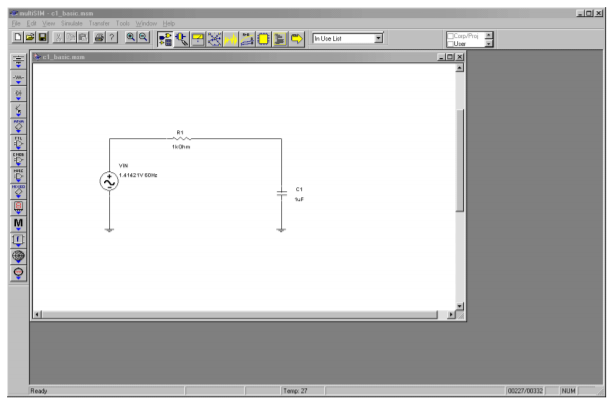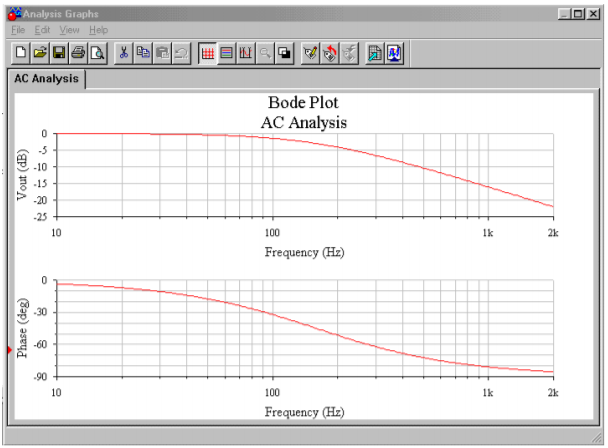7.5 Circuit Simulations Using Computers
With the advent of low cost personal computers, there are many alternatives to hand sketching of plots. One method involves the use of commercial or public domain software packages designed for circuit analysis. One common package is the public domain program SPICE. SPICE is an acronym that stands for Simulation Program with Integrated Circuit Emphasis, and was originally written in the mid- 1970’s by Dr. Laurence Nagel of the University of California. This program is available for many different computing platforms for minimal cost. SPICE also serves as the core for a number of commercial packages. The commercial versions generally add features such as schematic capture (the ability to “draw” circuits using the computer’s mouse), graphical input and output of data, interactive analysis, analog-digital mixed signal analysis and large device libraries. Examples of popular simulation packages include the commercial offerings OrCAD PSpice and Electronics Workbench Multisim, while freeware packages include Linear Technology LTspice and Texas Instruments TINA-TI. The choice of a specific simulation tool depends on the needs of the user, available facilities, costs, and so forth. Of course, everyone has their own working style, so personal preference also plays a role. Generally, any quality SPICE-based simulator will be sufficient for the circuits presented in this book.
In order to use a simulator, a circuit is “described” with a special data file. For non-graphical simulators, the data file can be created using an ordinary text editor. The data file is then used by the simulation program to estimate the circuit response. Simulation results can include items such as Bode gain and phase plots.

With graphical input (AKA schematic capture), components are usually dragged onto the work area and interconnected through the use of a mouse or other pointing device. Consequently, text-based input files are not needed, although many programs can import them and create the circuit from there. Similarly, simulation results are generally shown in graphical form using a plotting window or virtual oscilloscope instead of using a text-based output file. Graphical input and output using Multisim is shown in Figure 7.5.1 . Here a simple lag network is drawn on the worksheet. A Bode plot is then generated by selecting the AC Analysis option of Simulate.

Note that accurate models for specific op amps or other devices that are not included in the simulator’s libraries may be obtained from their manufacturer. This is often as simple as downloading them from the manufacturer’s Web site. A listing of manufacturer’s Web sites may be found in the Appendix.
Simulators are by no means small or trivial programs. They have many features and options, not to mention the variations produced by the many commercial versions. This text does not attempt to teach all of the intricacies of SPICE-based simulators. For that, you should consult your simulator user’s manual, or one of the books available on the subject. The examples in this book assume that you already have some familiarity with computer circuit simulators.
We will be using simulations in the following chapters for various purposes. One thing that you should always bear in mind is that simulation tools should not be used in place of a normal “human” analysis. Doing so can cause no end of grief. Simulations are only as good as the models used with them. It is easy to see that if the description of the circuit or the components within the circuit is not accurate, the simulation will not be accurate. Simulation tools are best used as a form of double checking a design, not as a substitute for proper analysis.

